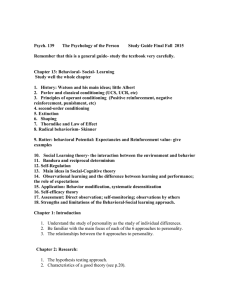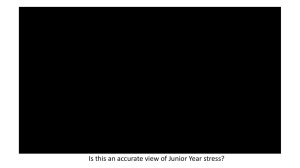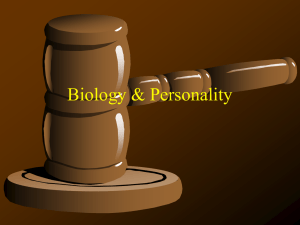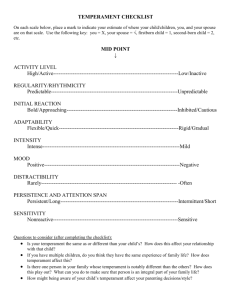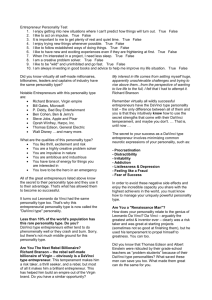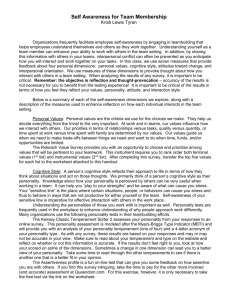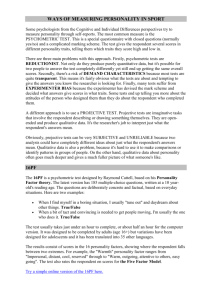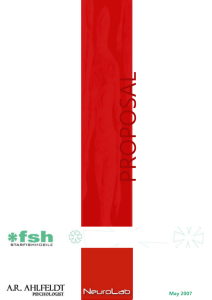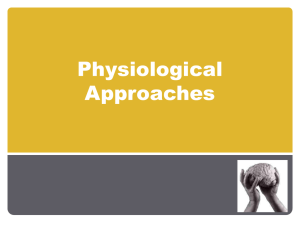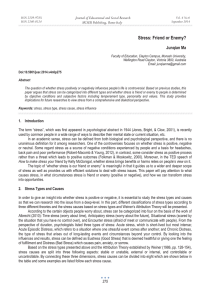139 chapter 9 questions
advertisement
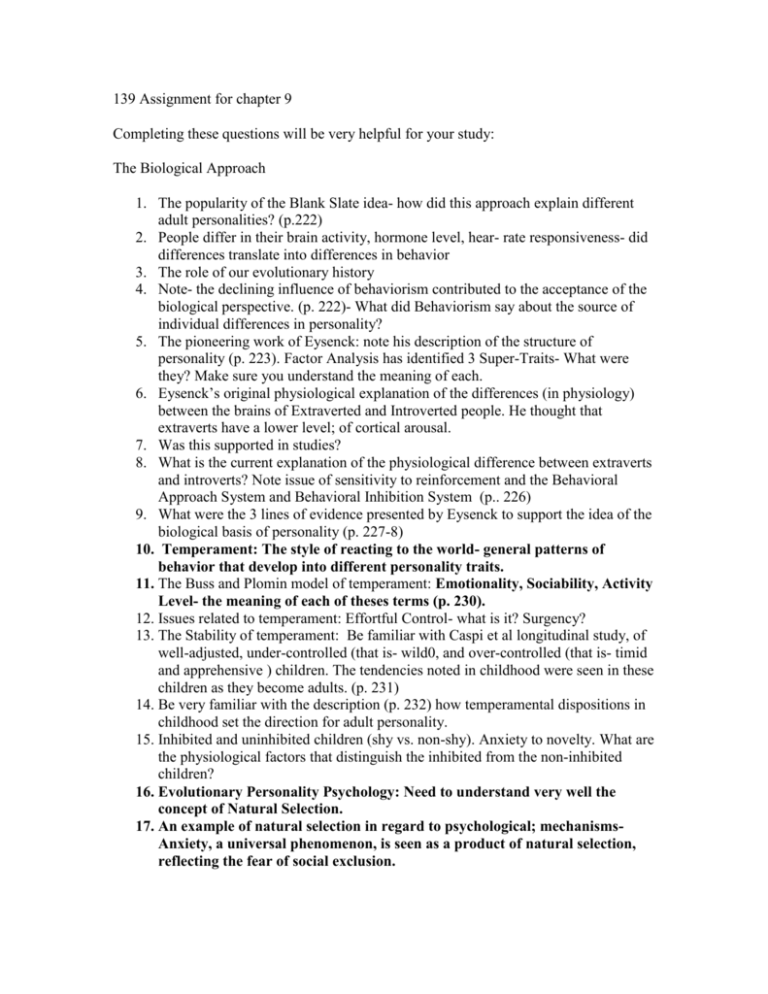
139 Assignment for chapter 9 Completing these questions will be very helpful for your study: The Biological Approach 1. The popularity of the Blank Slate idea- how did this approach explain different adult personalities? (p.222) 2. People differ in their brain activity, hormone level, hear- rate responsiveness- did differences translate into differences in behavior 3. The role of our evolutionary history 4. Note- the declining influence of behaviorism contributed to the acceptance of the biological perspective. (p. 222)- What did Behaviorism say about the source of individual differences in personality? 5. The pioneering work of Eysenck: note his description of the structure of personality (p. 223). Factor Analysis has identified 3 Super-Traits- What were they? Make sure you understand the meaning of each. 6. Eysenck’s original physiological explanation of the differences (in physiology) between the brains of Extraverted and Introverted people. He thought that extraverts have a lower level; of cortical arousal. 7. Was this supported in studies? 8. What is the current explanation of the physiological difference between extraverts and introverts? Note issue of sensitivity to reinforcement and the Behavioral Approach System and Behavioral Inhibition System (p.. 226) 9. What were the 3 lines of evidence presented by Eysenck to support the idea of the biological basis of personality (p. 227-8) 10. Temperament: The style of reacting to the world- general patterns of behavior that develop into different personality traits. 11. The Buss and Plomin model of temperament: Emotionality, Sociability, Activity Level- the meaning of each of theses terms (p. 230). 12. Issues related to temperament: Effortful Control- what is it? Surgency? 13. The Stability of temperament: Be familiar with Caspi et al longitudinal study, of well-adjusted, under-controlled (that is- wild0, and over-controlled (that is- timid and apprehensive ) children. The tendencies noted in childhood were seen in these children as they become adults. (p. 231) 14. Be very familiar with the description (p. 232) how temperamental dispositions in childhood set the direction for adult personality. 15. Inhibited and uninhibited children (shy vs. non-shy). Anxiety to novelty. What are the physiological factors that distinguish the inhibited from the non-inhibited children? 16. Evolutionary Personality Psychology: Need to understand very well the concept of Natural Selection. 17. An example of natural selection in regard to psychological; mechanismsAnxiety, a universal phenomenon, is seen as a product of natural selection, reflecting the fear of social exclusion. 18. Application: Some children’s temperaments may not be compatible with the formal requirements of the classroom. Such children may be judged incorrectly by the teacher as being lazy or unmotivated. 19. The Goodness-of Fit model- what is it and why is it important ? 20. Cerebral Asymmetry: How is it measured? What emotions are processed in the left hemisphere? What emotions are processed in the right hemisphere? What is the connection for depression? Remember that cerebral asymmetry has been shown in young babies. 21. Strengths and criticisms.
